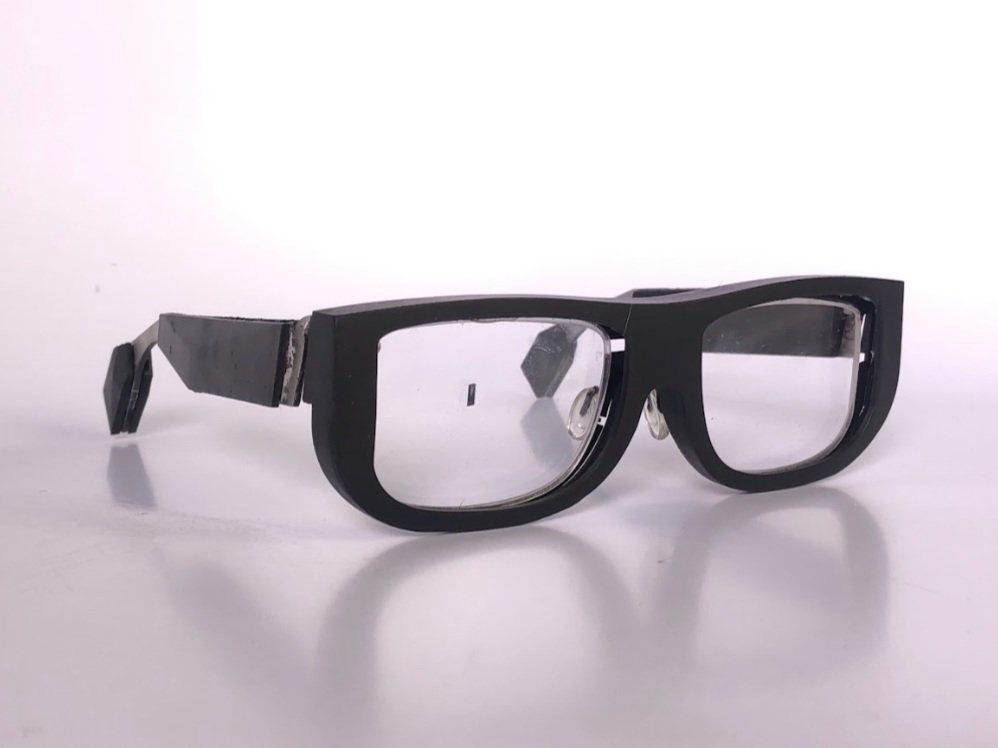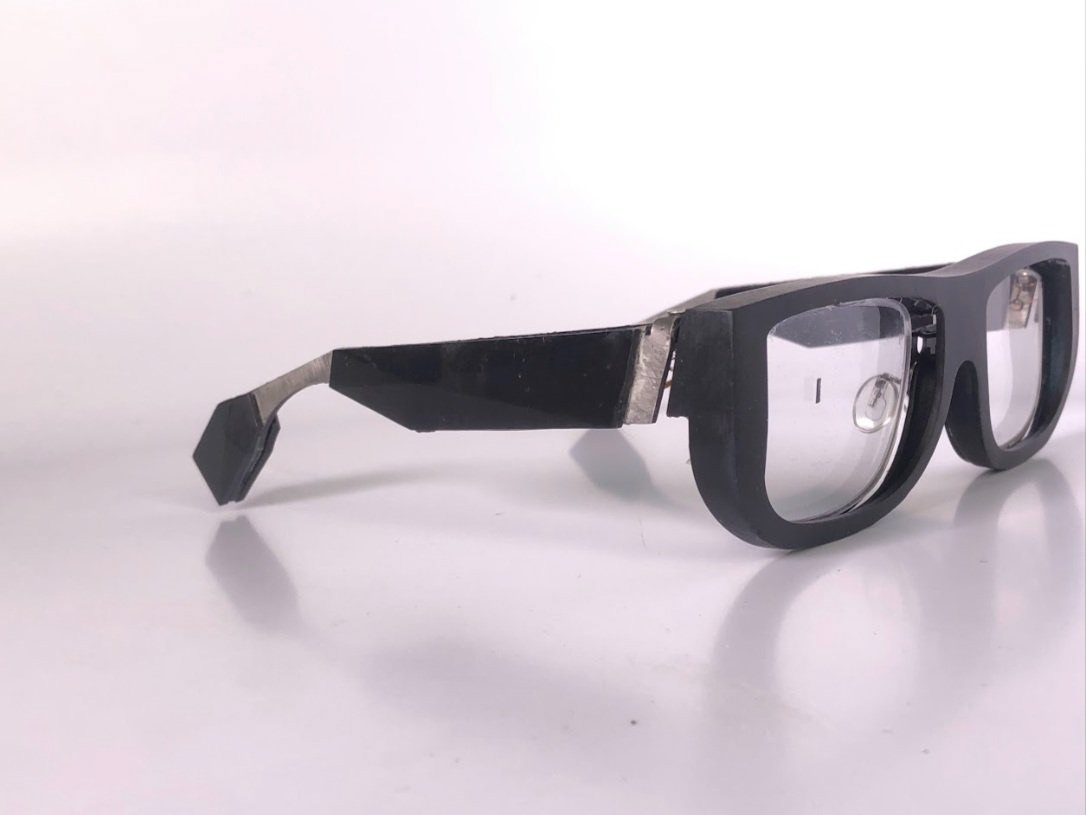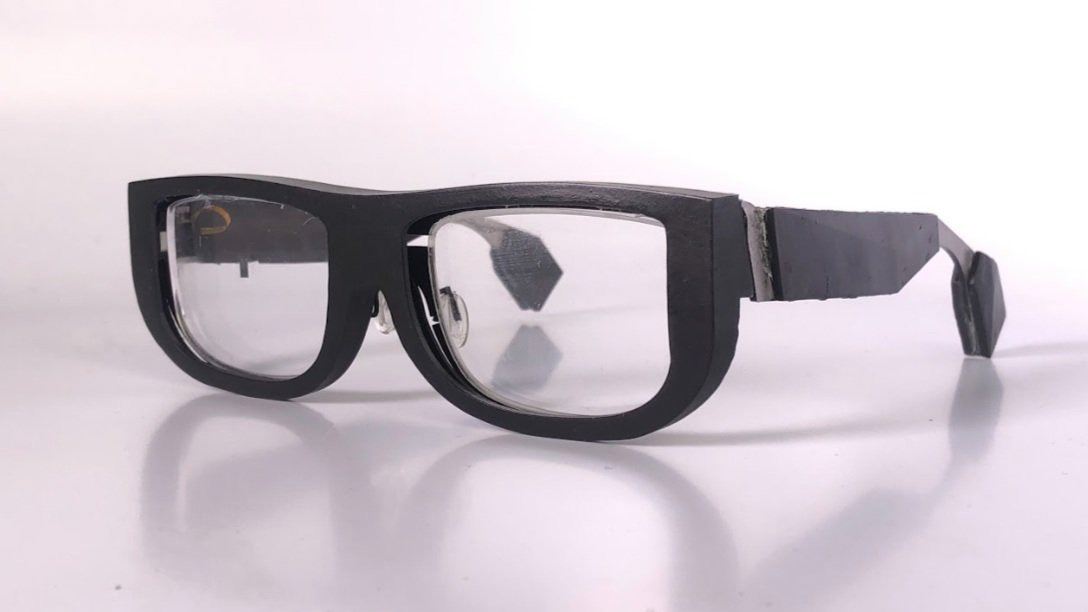Mixed Reality Eyewear VI
2018
Background
Mixed Reality Eyewear VI represents a critical pre-production prototype, developed to refine design aspects for public beta testing. I led this iteration to test comfort, weight distribution, and durability, ensuring the glasses could be worn comfortably for everyday use. The focus was on optimizing the user experience before finalizing the design for mass production.
This prototype featured our proprietary optics paired with a backlight, with a strategic switch from Kopin to Sony as our microdisplay supplier, which enhanced display quality while maintaining compatibility with our existing design. To prepare for real-world testing, we added a plastic cover to obscure unfinished design elements, ensuring the prototype could be tested publicly without being mistaken for a final product.
MY ROLE & STRATEGY
• Weight & Balance Optimization: Directed efforts to reduce overall mass and improve weight balance, minimizing pressure on the nose and temples for all-day wear. My role included analyzing user feedback to identify and address comfort issues like pressure points and frame stability.
• Camouflaged Design: Designed and implemented the plastic cover as “obvious camouflage” for the front frame, ensuring that beta testers could wear the prototype in public without revealing incomplete design details or influencing public perception of the final product.
• Material Adjustments: Improved the frame’s stainless steel electronics enclosure by increasing wall thickness for better durability, addressing issues of cracking in earlier models. While this version proved more durable, it highlighted the need for further refinement to reduce weight without compromising strength.
• Circuitry Workaround: With flexible printed circuits not yet available, I adapted the design by using hand-laid traces, secured in place with epoxy. This solution allowed us to maintain functional testing and prototyping timelines while waiting for more advanced components.
• Camouflaged Design: Designed and implemented the plastic cover as “obvious camouflage” for the front frame, ensuring that beta testers could wear the prototype in public without revealing incomplete design details or influencing public perception of the final product.
• Material Adjustments: Improved the frame’s stainless steel electronics enclosure by increasing wall thickness for better durability, addressing issues of cracking in earlier models. While this version proved more durable, it highlighted the need for further refinement to reduce weight without compromising strength.
• Circuitry Workaround: With flexible printed circuits not yet available, I adapted the design by using hand-laid traces, secured in place with epoxy. This solution allowed us to maintain functional testing and prototyping timelines while waiting for more advanced components.
KEY DESIGN FEATURES
• Single-Bolt Screw Mounting: Developed a new mounting system that secured the lenses using a single bolt at the center of the frame front, enabling easy adjustments during testing and maintaining stability under varying conditions.
• Sony Microdisplay Integration: Spearheaded the transition to Sony’s microdisplay, offering improved visual performance while maintaining a similar footprint to Kopin’s previous backlight. This change enhanced image quality without requiring significant design modifications.
• Laser-Cut Temple Surface: Focused on refining the temple design, testing for any chafing or discomfort caused by laser-cut surfaces during extended wear, ensuring that user comfort remained a priority.
• Sony Microdisplay Integration: Spearheaded the transition to Sony’s microdisplay, offering improved visual performance while maintaining a similar footprint to Kopin’s previous backlight. This change enhanced image quality without requiring significant design modifications.
• Laser-Cut Temple Surface: Focused on refining the temple design, testing for any chafing or discomfort caused by laser-cut surfaces during extended wear, ensuring that user comfort remained a priority.
PROTOTYPE FOR PUBLIC TESTING
This version of Mixed Reality Eyewear was designed specifically for use by beta testers in real-world environments, allowing us to gather insights into how the glasses performed during daily activities. The design prioritized user comfort, incorporating adjustments to weight balance and surface texture to reduce pressure points. The plastic cover allowed for discreet testing, ensuring that the unrefined elements did not draw unnecessary attention or misrepresent the final design vision.
WHY THIS MATTERS
Mixed Reality Eyewear VI was a crucial step in transitioning from prototype to pre-production. My focus on comfort optimization, strategic material adjustments, and real-world usability testing ensured that we could refine the design before full-scale production. The ability to pivot quickly, as seen with the shift to Sony’s microdisplay and the temporary use of hand-laid circuits, demonstrates my commitment to delivering a user-ready product while adapting to supply chain challenges. This phase reflects my ability to combine technical expertise with strategic planning, preparing the product for its next stage of development.






